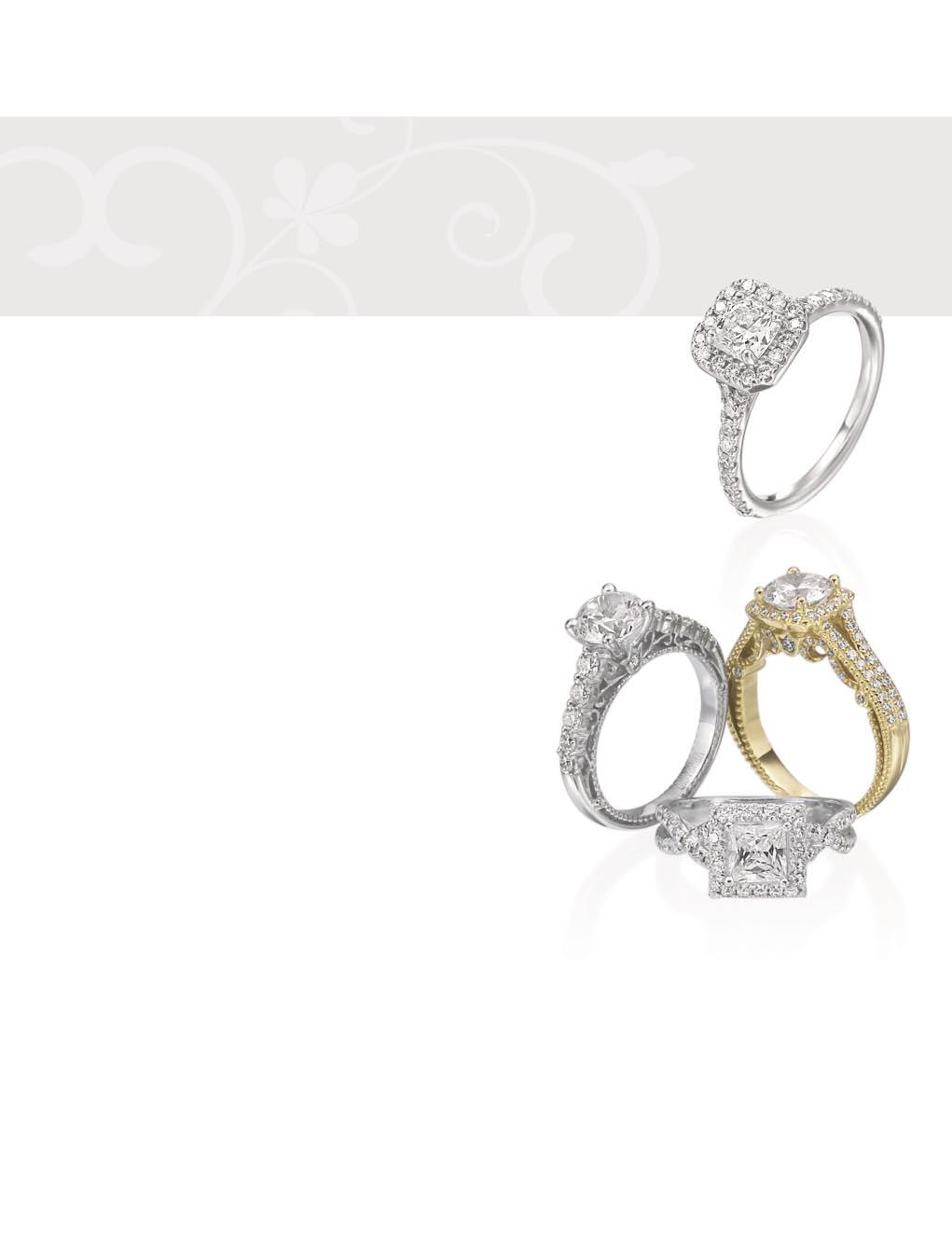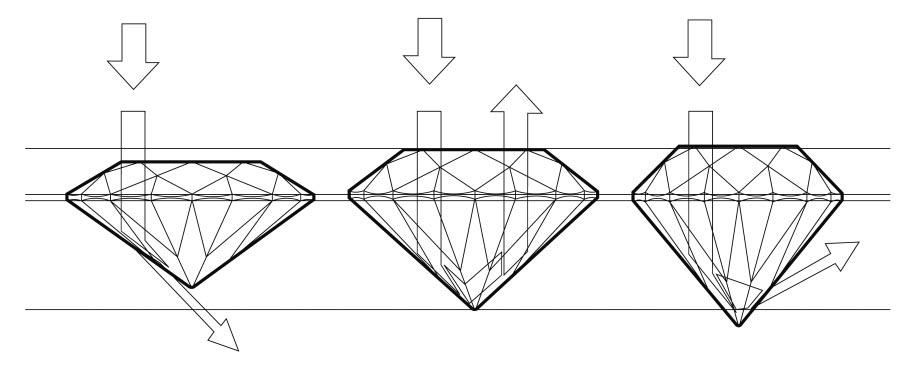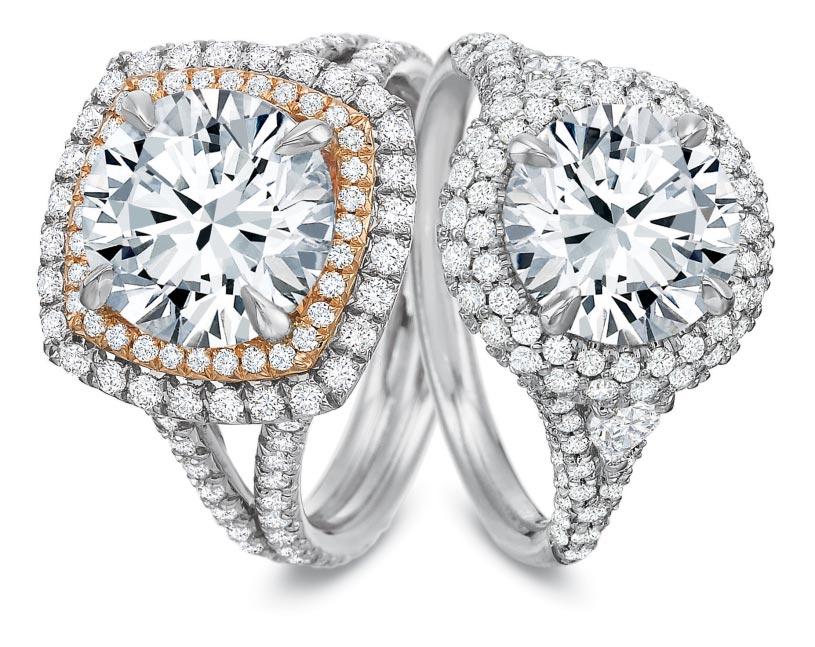
4 minute read
How to Buy a Diamond

Like snowflakes, every diamond is different and each one is beautiful in its own right. Diamonds, however, can be graded according to carat size, clarity, color, and cut. It is the particular combination of these elements that comes into play when you set out to buy the right diamond for you. Each of these factors, alone and combined has an impact on a diamond’s value.
Advertisement
Carat size: The larger the diamond, the higher the price, as they are valued primarily on carat size. Larger diamonds are rarer than smaller ones and therefore the price per carat rises exponentially with the size of the diamond.
Clarity: This refers to the presence of flaws within a diamond. Marks on the surface are called blemishes. Internal marks are called inclusions. The amount, type, size and placement of these imperfections can diminish a diamond’s value — if they are in the center of a diamond, this has a greater effect on light return, for example, than if they are off to the side. The Gemological Institute of America (GIA) clarity scale, the industry standard, contains 11 grades: Flawless (FL), Internally Flawless (IF), Very, Very Slightly Included (VVS1 and VVS2), Very Slightly Included (VS1 and VS2), Slightly Included (SI1 and SI2), and Included (I1, I2 and I3).

Transcend Dream Engagement Ring by Hearts on Fire.
Engagement rings from the Venetian Collection by Verragio.
FLAWLESS (FL) No inclusions or blemishes are visible to a skilled grader using 10x magnification. Exceptionally rare. INTERNALLY FLAWLESS (IF) No inclusions and only blemishes are visible to a skilled grader using 10x magnification. VERY, VERY SLIGHTLY INCLUDED (VVS1 AND VVS2) Inclusions are difficult for a skilled grader to see under 10x magnification. VERY SLIGHTLY INCLUDED (VS1 AND VS2) Inclusions are clearly visible under 10x magnification but can be characterized as minor. SLIGHTLY INCLUDED (SI1 AND SI2) Inclusions are noticeable to a skilled grader using 10x magnification. INCLUDED (I1, I2, AND I3) Inclusions are obvious under 10x magnification and may affect transparency and brilliance.


Engagement rings from the Tiara, Luminaire and Heaven's Gates Collections by Scott Kay.
Color: The closer a diamond is to being colorless, the higher
the grade. GIA’s color grading scale for diamonds, the industry
standard, starts with the letter “D” (colorless) and continues,
with increasing presence of color, to the letter Z.
Cut: Some experts believe cut has the biggest impact on a
diamond’s beauty. Cut reflects the quality of a stone’s propor-
tions, symmetry and polish, which combine to create a high
amount of light return, sparkle and/or fire – there is no single
ideal set of proportions, however certain minimum standards of
excellence come into play when assessing a stone’s roundness,
depth, width, uniformity of facets and quality of finish. The
American Gem Society (AGS) diamond cut grading system
ranks round brilliant stones (the most common cut) on a scale
from 0-10. According to the system, 0 is “ideal” and 10 is “poor.” The GIA diamond cut grading system ranks cut for round bril-
liant diamonds on the following scale: “excellent,” “very good,”
“good,” “fair” and “poor.” Ideal or excellent cuts reflect most or all
of the light that enters a diamond back to the eye; therefore, they
are considered top-of-the-line, and will command the highest
prices. A poorly cut diamond is one in which its proportions
cause light to be reflected out through the sides or bottom
(pavilion) of the stone.

SHALLOW IDEAL DEEP

Different types of cuts can affect a diamond in various ways. One cut might produce more sparkle or “scintillation,” and others might create more light return. Another cut might create fire — that is, it returns the light in a way that produces a spectrum of color. This is where personal preference comes into play. Although light return is usually highly valued according to most grading systems, some people prefer fire, others scintillation. This is the variable that factors in when it comes to branded diamonds. Hearts on Fire and Lazare Kaplan, for example, cut their diamonds to certain standards of excellence and to achieve certain effects.
Although diamonds are graded by very strict standards, each one is unique, and the only way to truly compare two stones is to look at them side by side. If you consult David Gardner’s Jewelers, you should have no trouble finding the diamond of your dreams — one with the size and quality you desire, in a price range you can afford.

Engagement rings from the Bella Vita Collection by Ritani. Engagement rings from the Petite Flush Fit Collection by Precision Set.
www.rare-creative.com RARE CREATIVE ©2012 PLEASE VISIT US AT WWW.PRECISIONSET.COM OR CALL 800 442 5693 MADE IN AMERICA











